|
|
ADDRESS AT THE 14TH NATIONAL CHILDREN'S SCIENCE CONGRESS, MAJITAR,SIKKIM
27-12-2006 : Majitar
Creative Minds lead to Scientific Discoveries
"Knowledge makes you Great"
I am indeed delighted to participate in the Inauguration of the 14th National Children?s Science Congress (NCSC) 2006 organized by the National Council for Science and Technology Communication of Ministry of Science and Technology and hosted by Sikkim State Council of Science and Technology. My greetings to the organizers, students, teachers and science planners participating in this Congress. I am happy that the theme of the Children Science Congress 2006 is ?Bio-diversity: Nurture Nature for your Future?.
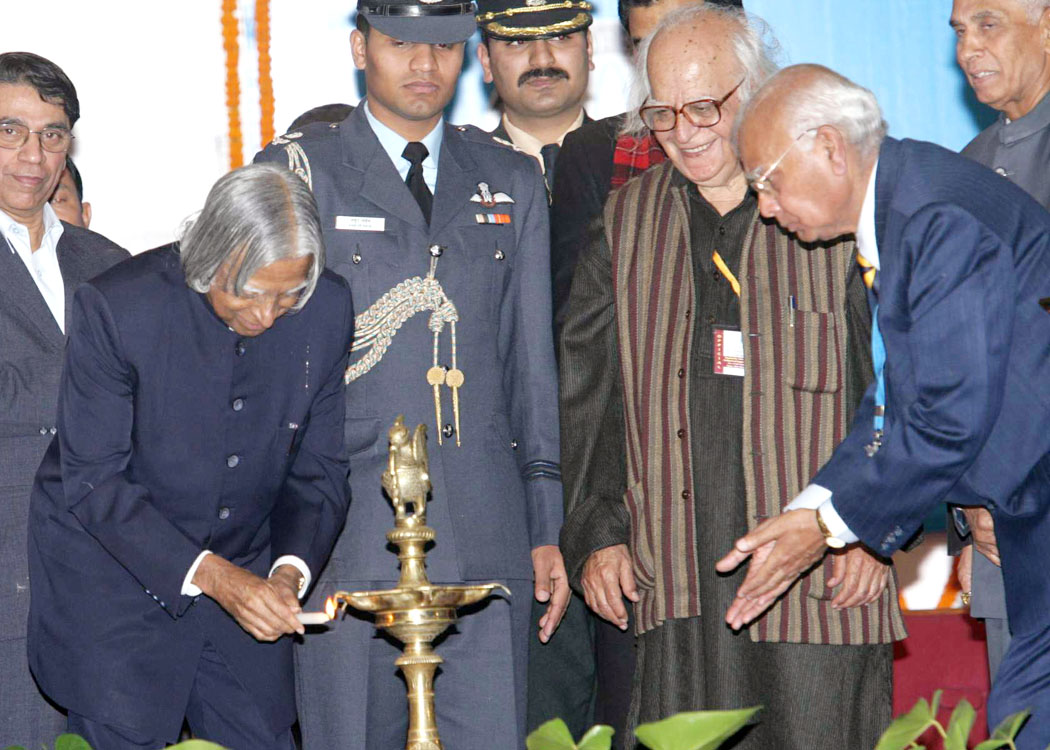

Science is a beautiful mission
Dear young friends, I am very happy to be in the amidst all of you in this beautiful Majhitar region of Sikkim. The beautiful environment generates beautiful minds. Beautiful minds lead to creativity. Creativity is indeed the birthplace for important questions. Important questions have been responsible for many scientific discoveries - Watson Craig?s discovery of ?Double Helix?; discovery of Raman? Effect; discovery of Einstein?s E=MC2; Srinivasa Ramanujan?s Number theory; birth of Darwin?s theory of evolution ? natural selection; Chandrasekhar Subramanyam?s astrophysical Chandrasekhar limit and black hole; Thomas Alva Edison?s invention of electric bulb; like that many many discoveries have taken place in the 20th century, enriching the human society. All of you in our country, who represent 50% of our youth have challenging scientific mission opportunities. Friends, you should have an aim in life, acquire knowledge and sweat, be not afraid of the problems. You will definitely become a scientist and succeed. Science is a life time mission. Are you ready? Let me now discuss about the future challenges in science?
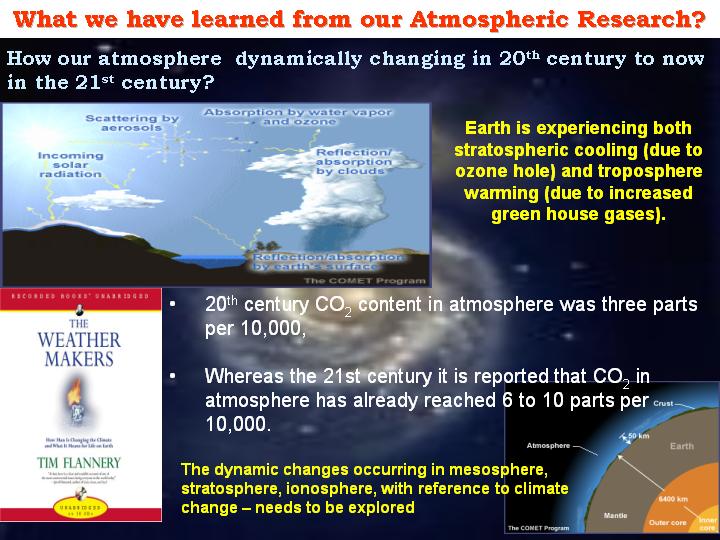
The beautiful earth is continuously being bombarded with about 30 billion tons of carbon dioxide every year and it is said that ozone layer is in the process of dilution. As you all know, Ozone layer regulates, the sun radiation and cosmic radiation on earth. Atmospheric research is indeed a big field and the mission is to lead to a livable atmosphere for sustainable quality of human life for generations to come. The human genome project has led to the discovery of about 30,000 genes amongst us. But the bigger scientific challenge has come in, how to characterize every gene. Characterizing gene structure is called Proteomics. Are you ready for such missions? The next challenge is: as you all know there are many scientific theories which are existing: Newton?s Law of Motion, Maxwell?s Electromagnetic theory, Einstein?s General relativity theory and String theory. Current mainstream Physics concepts require a ?Theory of Everything? to unify all the fundamental interactions of nature, which are usually considered to be four in number: gravity, the strong nuclear force, the weak nuclear force, and the electromagnetic force; It is said, the results of the unified theory could lead to man knowing how he was born. Many scientific teams in the world are researching on this. Recently, I saw in CERN Switzerland, the building of a Large Hydron Collider (LHC), the largest particle physics laboratory which may give valuable input for unified theory. And of course, after all, earth is one of the most insignificant planets of the solar system, where six billion people live today. Using the Chandrasekhar?s limit one can calculate, how long the sun will shine. All stars including our sun have a definite life, because they are all operating on thermo nuclear energy and have a finite life. It is estimated that the Sun has 10 billion years of life, half of which is already over. There are, however, many possibilities that may emerge, such as birth of a new star or human migration to planets of other stars, where life may be possible. So there are many many challenges for the Astro-scientists.
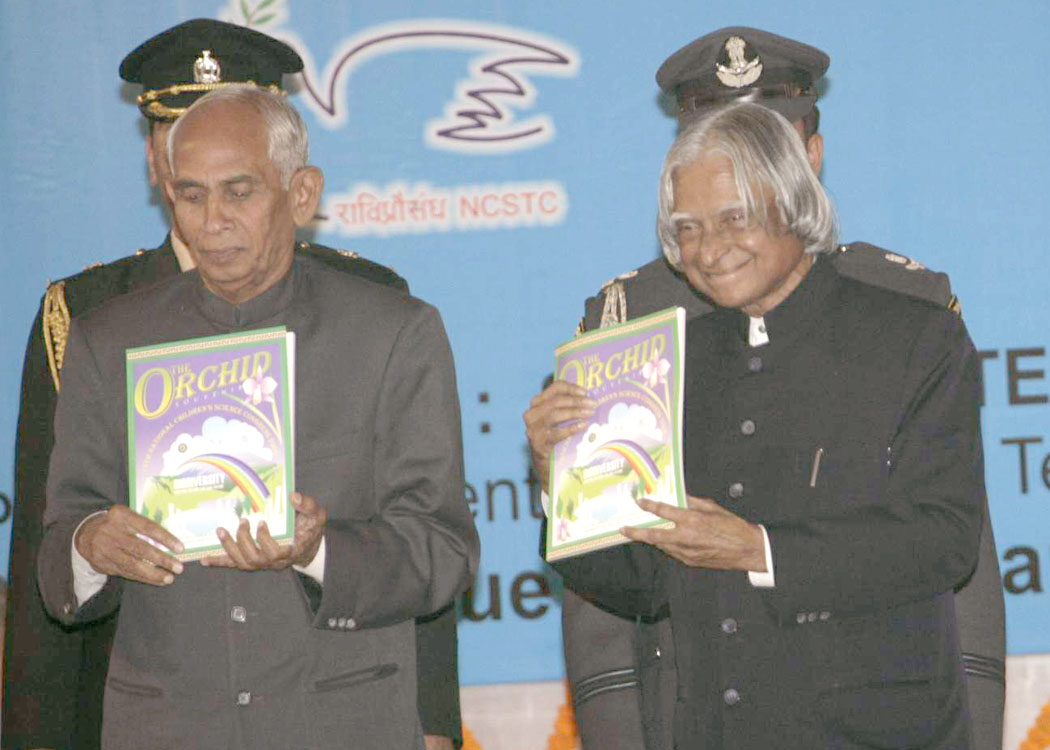
Astronomy: The Tata Institute of Fundamental research (TIFR) has built the large Radio telescope in the world in a rural area near the village of Khodad, 80 km from Pune. They have played a major role in discovering the binary millisecond pulsar. The Indian Astronomical Observatory, set up atop Mt. Saraswati, 4500 meter above Mean Sea Level at Hanle, South Eastern Ladakh is the highest observatory in the world. Galaxy is giving plenty of opportunities for scientific discoveries and there are numerous scientific research, which will benefit humanity as a whole.
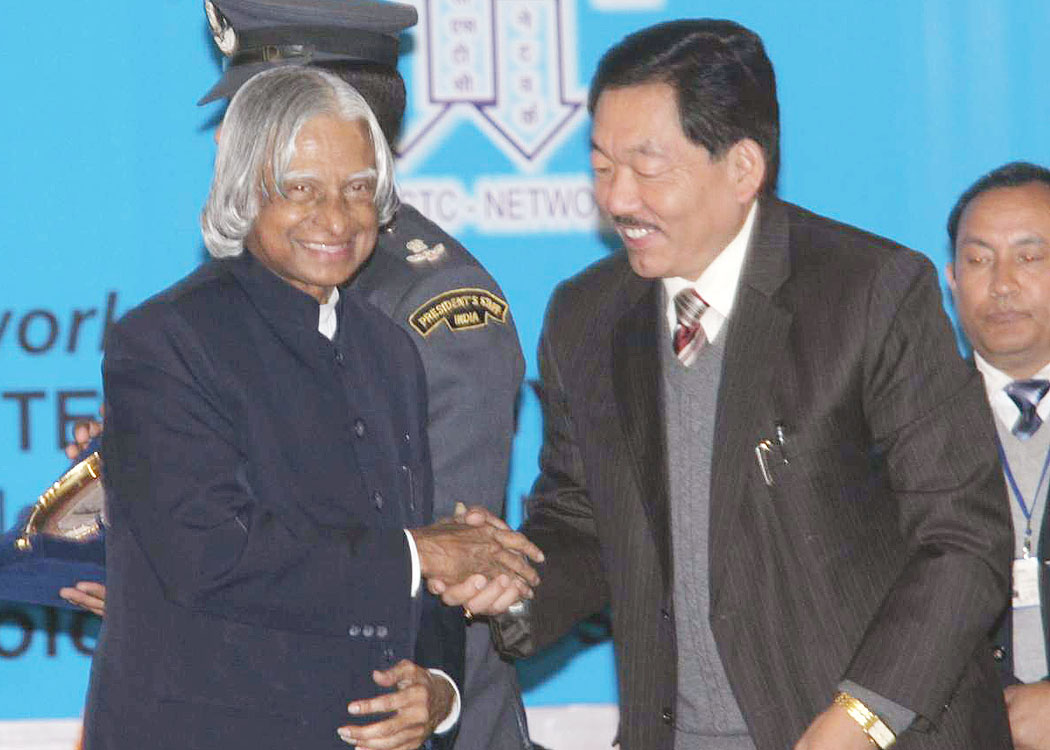
Healthcare: Let me now discuss another challenging area - healthcare, where innovation and creativity should remove the pain of the people. We have to discover preventive vaccines for diseases like HIV-AIDS, malaria and cardiac diseases. Thus there are so many scientific challenges are in front of you. The question is: only the prepared mind can discover. Prepared mind comes out of accumulated knowledge, possess will power and ability to defeat problems and succeed. Science has provided challenges continuously for the last two centuries.
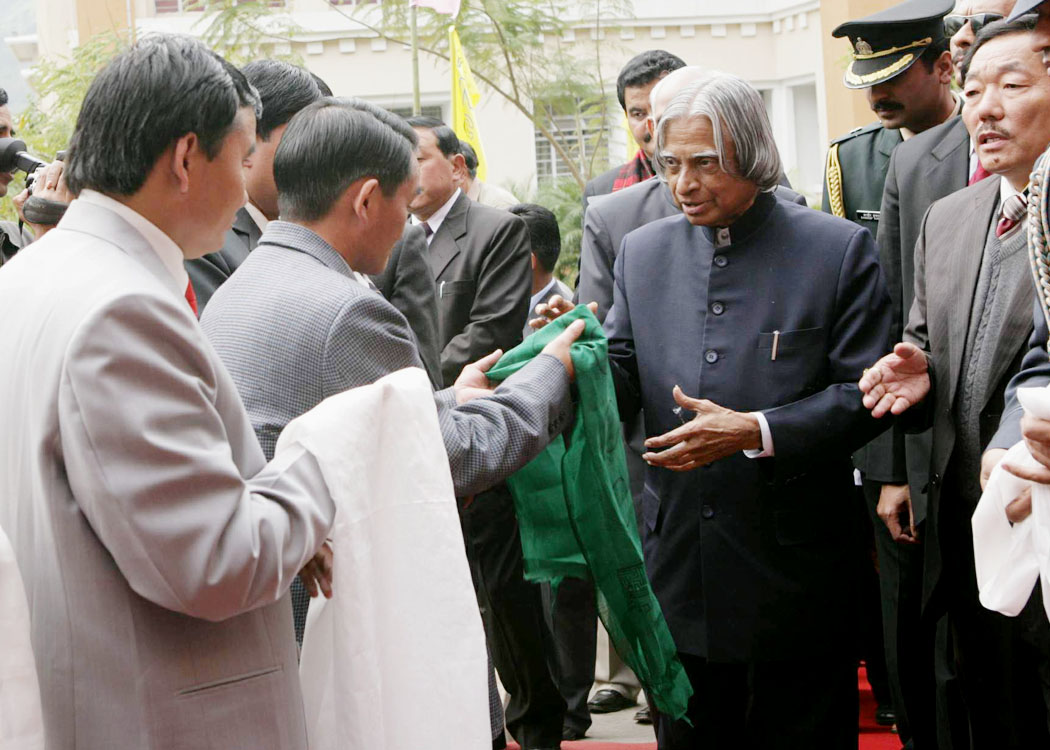
India's science leaders: In our country, the end of 20th century, witnessed four great scientific events leading to technology. As you all know in the 50?s India was in the ship to mouth conditions in the food grains. The vision of political leaders like Shri C. Subramanian and scientific leaders like Dr M.S. Swaminathan has led to the First Green Revolution enabling India to produce over 200 million tons of food grains today through the use of high yield variety seeds. Dr. Varghese Kurien through milk co-operative movement, led India to become the largest producer of milk. Homi Bhabha established the TIFR, leading to nuclear science and research. Today India has 14 reactors producing nearly 4000 MW electrical power. Department of Atomic Energy targets 50,000 MW of power by 2030. Prof Vikram Sarabhai?s space vision has enabled India to acquire the capability to design, develop, build and launch any type of satellite from Indian soil. Similarly, Prof Shanti Swarup Bhatnagar created multiple CSIR laboratories in various disciplines for developing and transferring the technology to Indian industry including drugs for many tropical diseases. Simultaneously, Dr Kothari was in the mission of creating a chain of DRDO laboratories for promoting self-reliance in critical technologies and strategic systems. Recently, of course the youth power has led to a revolution in ICT and Pharma where the industry has started producing internationally competitive drugs from new molecules.
Friends, this is a brief background of S&T in India. Now, I would like to discuss about certain contemporary achievements in Indian S&T. First I would like to talk about a important mission carried out by our defence scientists, I happened to study the results, I thought of sharing with you.
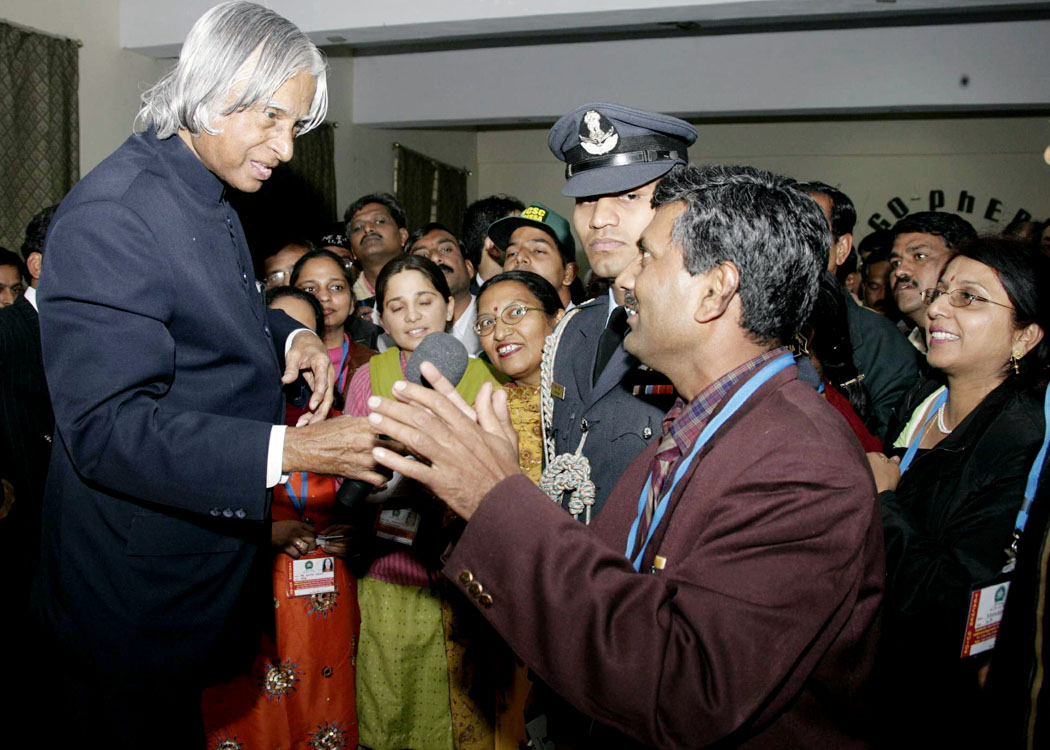

Missile intercepts another missile
A few weeks back, I was in a place called Chandipur at Sea off the coast of Orissa, where the preparations for a major missile test were being carried out. What was this test? This test was to intercept an incoming missile presumably from an adversary by our missile. Imagine, an incoming missile is traveling at a speed of 1200 meters per second, very high above the ground. You cannot judge it with your eyes. There are telemetry systems continuously radiating performance information about the missile. We make use of radars, which work by bouncing off radio waves and sensing the echo to find out the position and speed of the target. These radars are very powerful so that they can detect precisely a small object hundreds of kilometers away. Having detected a fast moving target what do we do next? We must then decide, ?is this a missile aimed at us?? To do this we must make use of extremely powerful fast computers on the ground running millions of calculations per second. Based on these calculations, if we conclude that the object is indeed a missile coming towards us, then steps must be taken to intercept the target missile. What are these steps? These steps are to find out where is the missile launched from? Where is it going to impact and then to see which of our own missile can intercept this incoming missile. You can very well imagine the minimum time available for the required operations. Having done this, the next step is to launch our own indigenously designed missile at the correct time from the designated launch pad. Are our jobs over? No. Having launched our own missile we must guide towards the enemy missile. This is done by guiding our own missile through a radio link to track where is the enemy missile right now. As our missile approaches the target, the missile opens its own small radar called a seeker to accurately locate the target and then to home on to it, intercept and destroy.
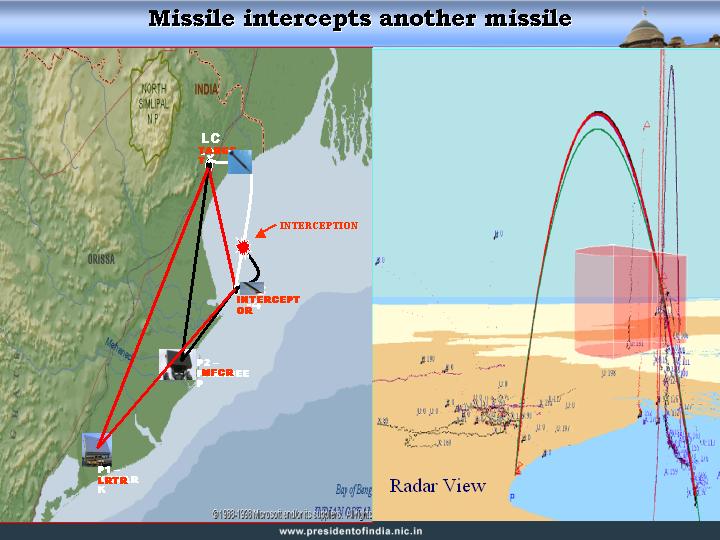
All these were done successfully by our defence scientists on 27th November, 2006, in the Wheeler Island and they had a direct interception of the incoming missile which they destroyed. This is a major achievement for our country as the test involved the development and integration of many technologies, based on the work of a large number of teams. I am sure, some of the young scientists assembled here may work on such hypersonic missions in your future career.

Integrated Atmospheric research
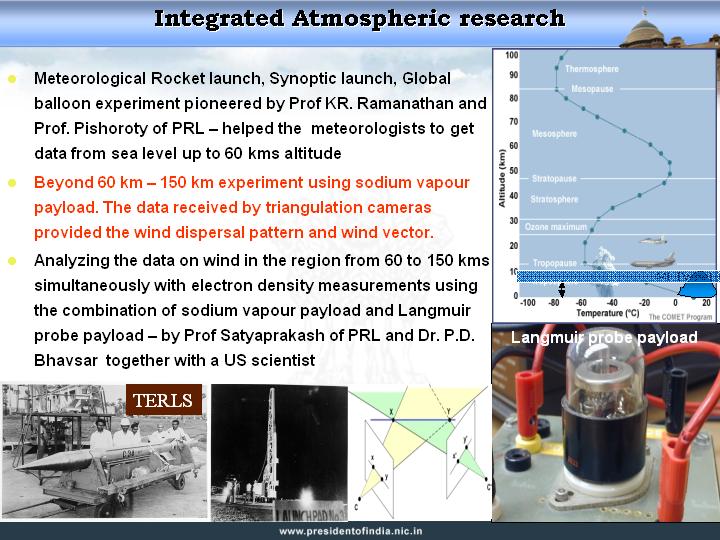
As I am in the beautiful environs of Sikkim, amidst young scientific minds from all over the country, a thought comes to my mind as to how to make our planet conducive for generations to come. Hence, let me now discuss on the topic ?Creative Minds lead to Scientific Discoveries?. Now, friends, I would like to talk to you about our atmosphere.
Let me first start with my own experience. During 1963 to 1975, when I was working in the Thumba Equatorial Rocket Launching Station (TERLS), it was the seat of atmospheric research in the country. This was the first time, it was done in an integrated way, because that the four types of experiments for atmospheric research were being conducted simultaneously. The four types were:
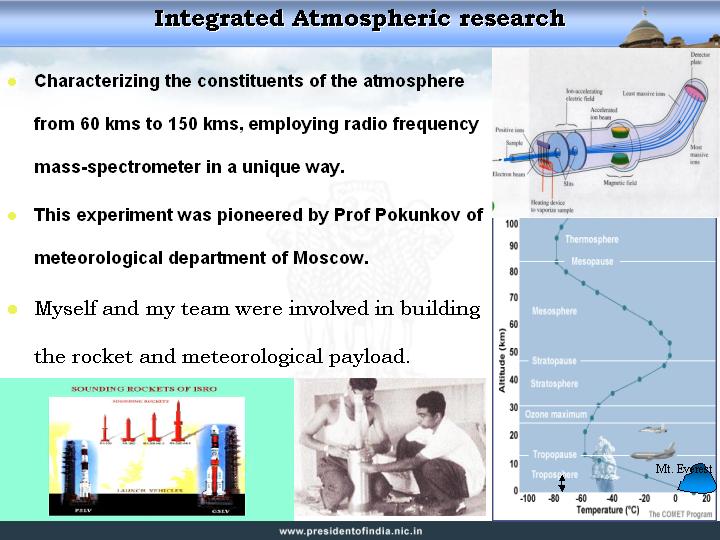
1. Meteorological Rockets were launched from TERLS every week with copper chaff payload up to 60 kms altitude that would provide wind vectors. Simultaneously, synoptic rocket launches were taking place in many parts of the world. These experiments were supported by balloon experiments upto 30 kms. The meteorologists had thus the data from sea level up to 60 kms altitude. This experiment was pioneered by Prof K.R. Ramanathan and Prof. Pishoroty of PRL in India. Myself and my team were involved in building the rocket and meteorological payload.
2. Second type of sounding rocket experiments were simultaneously progressed by Prof P.D. Bhavsar of PRL and Prof Blemont of CNES, France. This experiment was conducted by using sodium vapour payload for the region between 60 to 150 kms altitude. The data received by triangulation cameras provided the wind dispersal pattern and wind vector.
3. The third type of experiment was conducted with the combination of sodium vapour payload and Langmuir probe payload. This experiment led to data on wind in the region from 60 to 150 kms simultaneously with electron density measurements. These experiments were pioneered by Prof Satyaprakash and Dr. P.D. Bhavsar of PRL together with a US scientist.
4. The fourth experiment was pioneered by Prof Pokunkov of meteorological department of Moscow. His experiment was unique using radio frequency mass-spectrometer. This would characterize the constituents of the atmosphere from 60 kms to 150 kms.

All four types of atmospheric science experiments were conducted in India with the participation of hundreds of scientists for characterizing the regions from Troposphere to Thermosphere supported by ground based experiments. Troposphere extends between ground to 5 km altitude. Stratosphere is between 5 kms to 40 kms. the Mesosphere extends upto 65 kms and Thermosphere upto 95 kms. Ozone layer is between 25 kms. and 30 kms altitude. Since then, many advances have taken place in both experimental techniques and instrumentation using satellites and ground based radars and other observation tools for atmospheric research. Recently, I visited ISRO?s National Atmospheric Research Laboratory (NARL) near Tirupati and studied the experiments performed Mesospheric, Stratospheric and Tropospheric radar (MST radar), which is used to study the winds in the altitude range upto 200 kms.
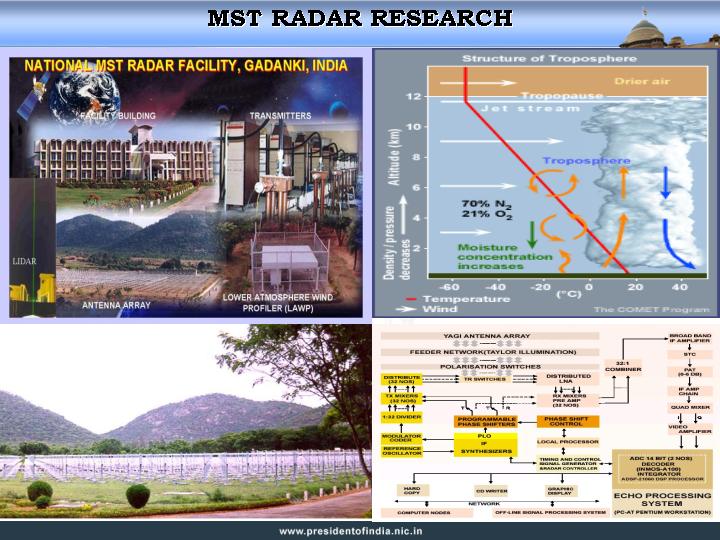

Changing atmosphere
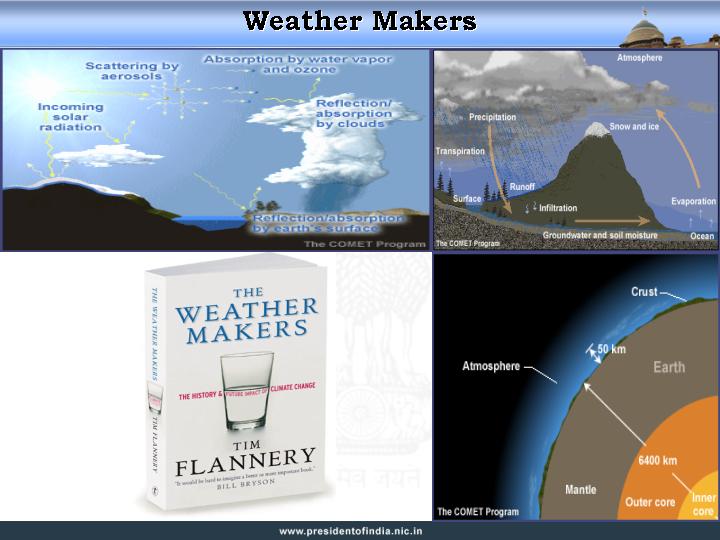
Our atmosphere is dynamically changing continuously. As you all may be aware, Earth is experiencing both stratospheric cooling (due to ozone hole) and tropospheric warming (due to increased green house gases). Also, I would like to refer Mr. Tim Flannery?s book ?THE WEATHER MAKERS? where the author begins by pointing out that twentieth century has witnessed CO2 content in atmosphere going up to three parts per 10,000. It is reported that in the beginning of the twenty first century that CO2 content in atmosphere has already reached 6 to 10 parts per 10,000. Since we are in Sikkim probably this place is blessed with much lower CO2 content in the atmosphere. We have to find through atmospheric science research what will be the dynamic changes occurring in mesosphere, stratosphere, ionosphere, with reference to climate change. Atmospheric research in relation to the climate change is going to be one of the very important scientific researches for the 21st century. One major challenge is to understand the complex interaction among the key element of Earth system namely ocean, atmosphere and solid Earth which would encompass ocean science, meteorology, climate, environment and seismology. Many of you who have assembled here may participate in such areas of research.
Now, I would like to discuss with you a new research finding which may be of interest to the budding scientists.

Emissions from trees and climate change
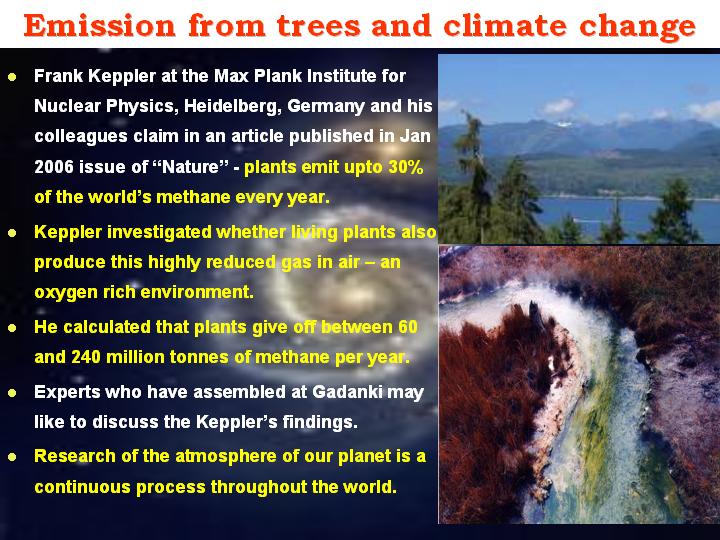
Frank Keppler at the Max Plank Institute for Nuclear Physics, Heidelberg, Germany and his colleagues claim in an article published in January 2006 issue of ?Nature?, that plants emit upto 30% of the world?s methane every year. This has totally changed the discussions on the causes for climatic change. After discovering that fallen leaves, or plant litter, produced methane, Keppler investigated whether living plants also produce this highly reduced gas in air ? an oxygen rich environment. He calculated that plants give off between 60 and 240 million tonnes of methane per year. ?It is a new pathway of methane formation,? said Keppler, ?it will change our thinking about plants and their role in climate change.? This has created a scientific debate and our young scientists may also reflect on this. If this postulated theory holds good, it may be a source of deriving Methane at an affordable cost from the atmosphere for societal benefits. Keppler?s discovery of methane emission from plants and trees will indeed open up new research areas in atmospheric science.

Energy Independence
Today, the people of planet Earth, particularly the highly developed societies are indeed the weather makers. These societies are responsible for generating the highest volume of green house gases, which directly affects troposphere and stratosphere. Is there a solution? Yes. I want to share my thoughts. On 15th August 2005, I addressed the nation through a national broadcast on Energy Independence. What is the solution? The CO2 primarily emanates from the use of fossil fuel material which the world is burning in large quantities for generating power for household, industry and transportation. I have suggested a possible solution for our country for making maximum use of solar power, nuclear power and bio-fuel instead of fossil fuels and make the country energy independent by the year 2030. Some of the scientific and technological challenges of these areas are given below:
Carbon Nano Tube (CNT) based solar cells for higher efficiency: The low efficiency of conventional Photo Voltaic (PV) cells has restricted the use of solar cells, for large power generation application. Recent research has shown that the alignment of the CNT with the polymer composites substrate is the key issue and this aligned CNT based PV cells would give very high efficiency in photovoltaic conversion. In this process, the researchers could achieve the efficiency of about 50% at the laboratory scale. Our scientists have to take up this challenge and come up with the development of a CNT based PV cell with an efficiency of at least 50% within the next three years so that it can go into commercial production within five years. Solar power generation using high efficiency CNT based solar power photovoltaic cells will be highly competitive, compared to other forms of energy generation systems.
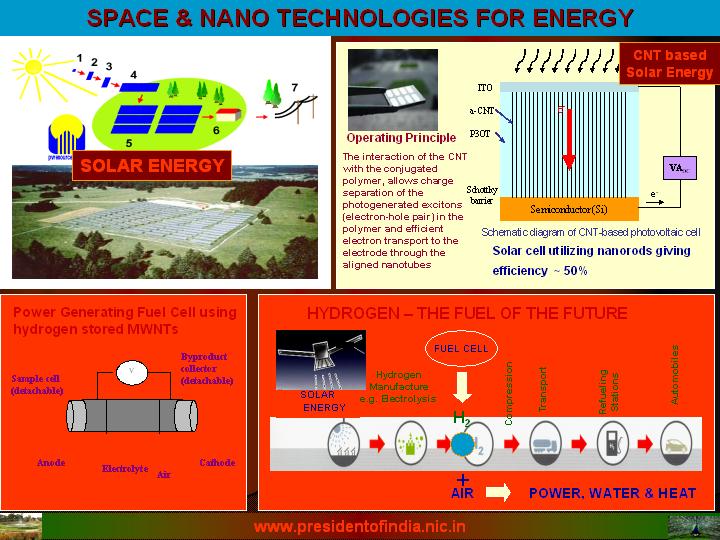
Nuclear Energy: Nuclear power generation has been given a thrust by the use of uranium based fuel. However, to meet the increased needs of nuclear power generation, it is essential to pursue the development of nuclear power using Thorium, reserves of which are higher in the country. Technology development has to be accelerated for Thorium based reactors. Thorium is a non-fissile material. For conversion of Thorium and maximizing its utilization development of Fast Breeder Reactor has been rightly taken up.
Use of Biofuel: We have to realize production of 60 million tonnes of bio-diesel per annum by 2030 (this would be 20% of anticipated oil consumption in 2030). This has to be realized through research for improving the productivity of Jatropha plant seeds, mastering the extraction and esterification technology and finding remunerative bi-products, which is a challenge for life science scientists.
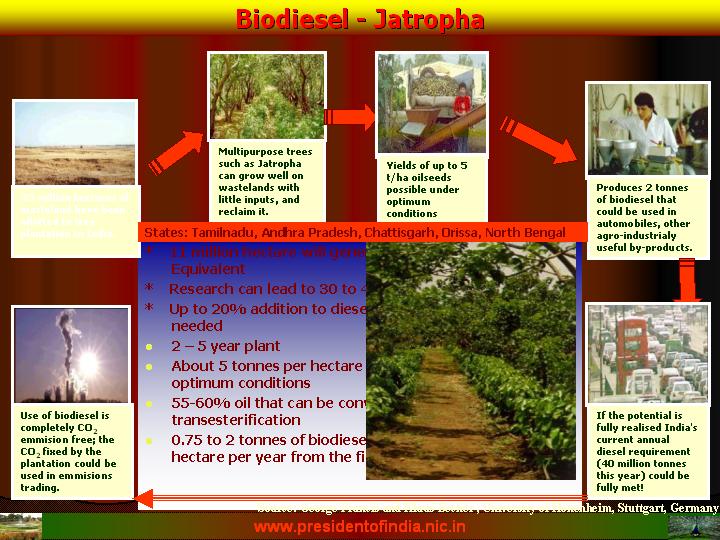

High altitude bio-diversity
When I think of bio-diversity, I am reminded of Ladakh cold desert of Jammu & Kashmir where I came across a thorny bush with small size fruits. There is natural growth of it even in areas near Siachen glacier that is Nubra Valley. On a study of this bush Seabuckthorn, it was found as a storehouse of nutrition and bio-molecules useful in managing and curing several diseases. The technology of its exploitation was developed by DRDO and commercialized. ?Leh Berry? juice from Seabuckthorn has become a commercial product. This has resulted in increased cultivation of Seabuckthorn plants by the farmers, resulting in the high altitude area becoming green through intensity of bio-diversity. It has also improved the economy of Ladakh region and has provided employment to the local people. The local farmers cooperative has put up its own fruit juice extraction units and fruit pulp worth over a crore of rupees is exported annually. I understand that seabuckthorn plant is found in Sikkim also which can lead to further greening of this region.
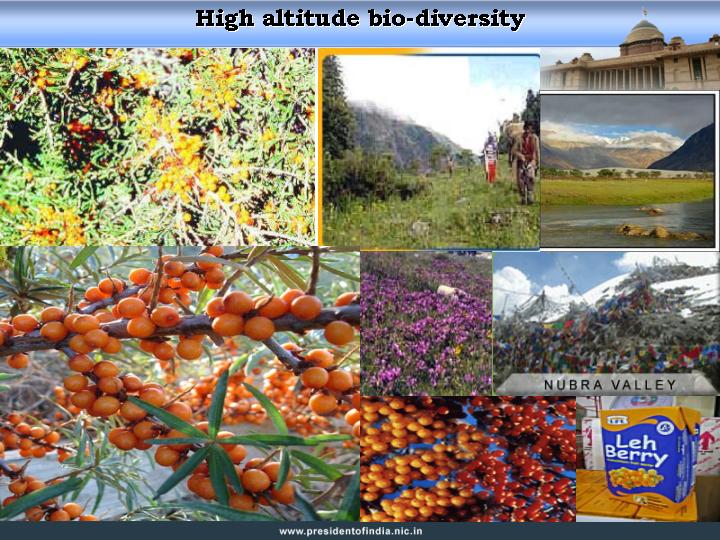

Rashtrapati Bhavan experience
We had certain acres of unutilized land in the Rashtrapati Bhavan. We were discussing how to use this land. Through a brain storming session, we found that we had two options, either we could use it as an extended flower garden or make it people centric through the other beneficial plantations. Since Rashtrapati Bhavan is the first home of the country, we thought, it will be more appropriate to use the land for certain societal missions.
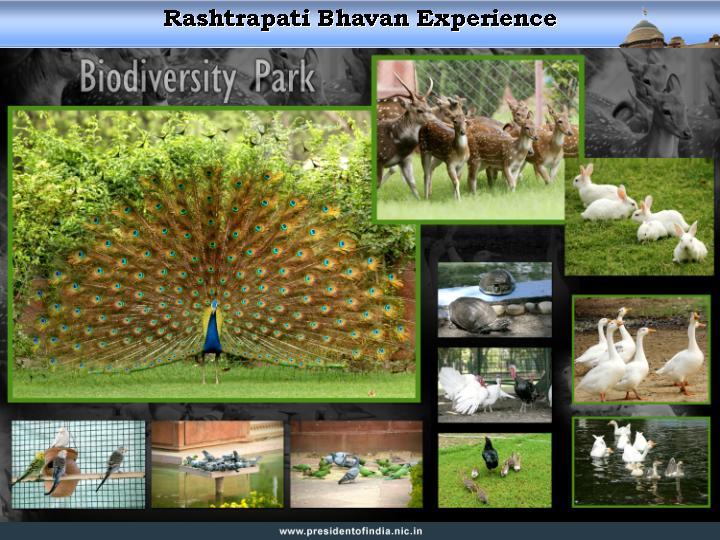
We created two herbal farms. One farm was used for assisting the farmers on how to add value to their products by selecting good quality herbs, how to extract, how to store and how to market the product. This has been done in partnership with National R & D Laboratories. Second one, we created for use by the visually challenged people, where they are able to feel the plant, smell the plant and learn about various plants through the Braille boards.
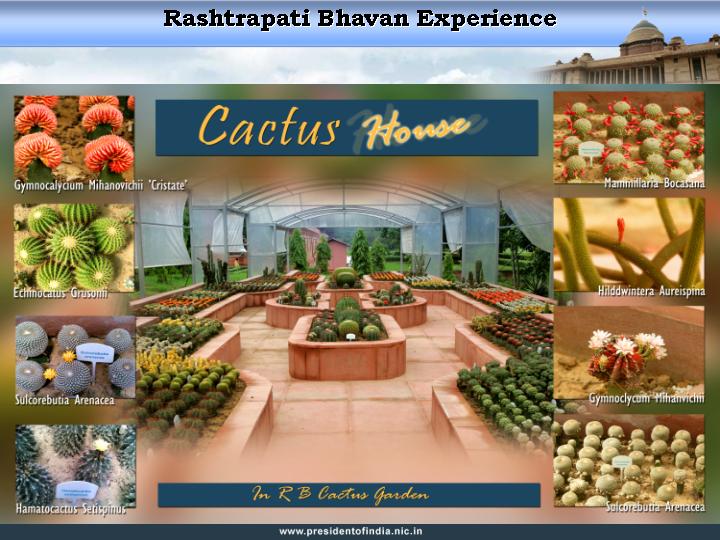
Simultaneously, we created a spiritual garden. Here we planted very important plants which are valued by people of various religions. This will create Unity of Minds among people of different faiths since all the plantations were in a cluster. In the third area, a nutritional garden has been created where the vegetables and fruits are grown using organic cultivation. In the fourth area we cultivated Jatropha curcus, the bio-fuel plant; so that farmers can learn about the Jatropha cultivation and the conversion of Jatropha into Bio-fuel which can substantially increase the earning capacity of the farmers.
Rashtrapati Bhavan was receiving nearly two lakh visitors a year in the earlier years. Now Rashtrapati Bhavan receives over one million people in a year with varied interests. Some of them are interested in seeing the beauty of the garden, some farmers would like to learn about important herbal cultivation and Jatropha plantations, some life science students would like to know more about plants and plants characteristics, religious personalities would like to see spiritual garden and the visually challenged people would like to have first hand feel of the herbal garden. The increase of citizen?s visit by five times occurred due to the citizen centric nature of the Rashtrapati Bhavan garden.

An Unique bond through innovative hatching
In the bio-diversity park of Rashtrapati Bhavan, I observed an interesting phenomenon where different animals and birds happily co-exist. One of our Guinea fowl laid eggs but it would not sit on the eggs for hatching. Our experts introduced a Hen for hatching the eggs. They succeeded in the experiment. guinea fowl eggs were hatched by the hen to produce chicks. These chicks are 3 months old now but they still follow the hen which hatched them and not their guinea fowl, mother, which laid the eggs. Mother hen with guinea fowl off-springs has become an interesting sight to see in the bio-diversity park. They roam around among the other inmates of the park such as ducks, deer, turkeys, guinea fowl and rabbits. Now, let me come to space research which will also play a major role in shaping the future of humanity.
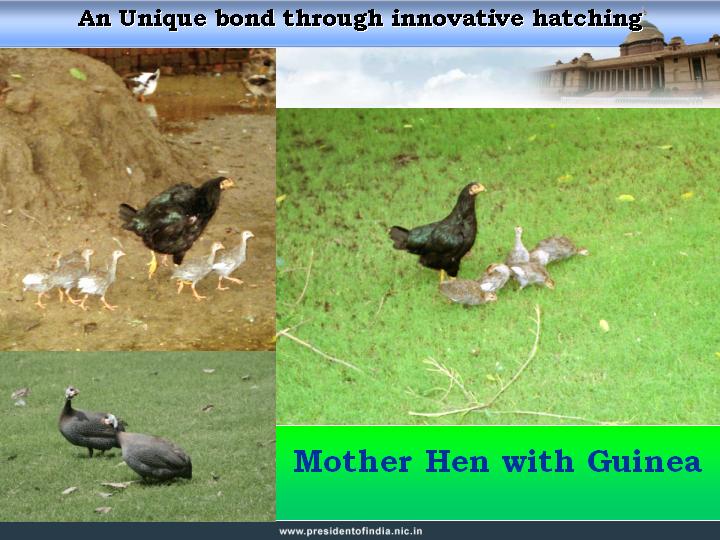

Space Capsule Recovery Experiment
I would like to first share with you about Space Capsule Recovery Experiment (SRE) which is a unique mission being planned by Indian Space Research Organization (ISRO) in the 2nd week of January 2007. The objective of the SRE is to demonstrate India?s capability to recover an orbiting capsule back to earth. You may be familiar with Polar Satellite Launch Vehicle (PSLV) which is an Indian launch vehicle capable of placing spacecrafts in different orbits like polar, low earth and geo-stationary. The upcoming mission of PSLV (PSLV:C-7) will launch SRE along with CARTOSAT-II, Lapan Tubsat (Indonesia) and nano-Sat (Argentina) as co-passengers into 635 kms. polar sun-synchronous orbit.
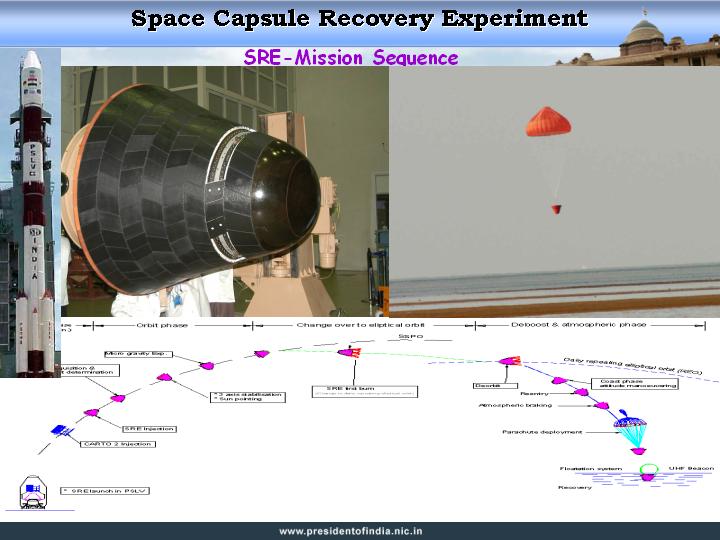
The two major satellites SRE and CARTOSAT-2 are stacked one over the other on the top of the four stage PSLV. Within 20 minutes of the take-off of the PSLV, CARTOSAT-2 will be launched into orbit. After suitable collision avoidance measures, SRE will also be in orbit soon. SRE has two micro gravity experiments. The SRE will be in orbit for about 12 days with an orbital velocity of about 7,500 meters per second. Then, the capsule will be de-orbited to re-enter earth atmosphere at about 100 kms using space capsule thrusters. After the initial aerodynamic braking, the parachute system will reduce the touch down velocity to 12 meter per second in the final phase. The splash down is planned in Bay of Bengal nearly 140 kms away from SHAR. The flotation system and locating aids will be used to recover the capsule using helicopters and ships within 48 hours of splash down. The mission, thus, will enable understanding of a number of new technologies like reusable thermal protection system, navigation guidance and control system for re-entry, hypersonic aerodynamics, communication blackout, deceleration and flotation system, recovery operations and performance of micro gravity payloads. You can very well see the complexity of the mission. This initiative can be a stepping stone to develop reusable launch vehicle and commercial micro gravity experiments in the future. This may result in future recovery of our astronauts, you may be the lucky one?s, if you decide to take up the field of astronomy.

Second Space Vision
Today, India has the capability to build any type of satellite launch vehicle to place remote sensing, communication and meteorology satellites in different orbits and space application has become part of our daily life. ISRO now has planned for unmanned spacecraft exploration of the moon starting with Chandrayan-I during 2008. There is a proposal emerging for manned space mission in low earth orbit by 2014. I also visualize manned missions to Moon and Mars. Being in Sikkim, let me also add that space technology can play a major role in realization of the Sikkim?s Vision 2015 in education, health, natural resources survey and infrastructural planning.

Conclusion
Dear friends, science and technology will be an important ingredient to transform India into a developed nation before 2020. The young scientific minds assembled here represent the 300 million youth of the nation of your age group. You should all develop the curiosity, knowledge, core competence, determination, perseverance and the courage to invent new phenomena in science and technology leading to path breaking discoveries. Now, I would like to administer the oath on courage.
Courage
Courage to think different,
Courage to invent,
Courage to discover the impossible,
Courage to travel into an unexplored path,
Courage to combat the problems and Succeed, are the unique qualities of the youth.
As a youth of my nation, I will work and work with courage to achieve success in scientific discoveries.
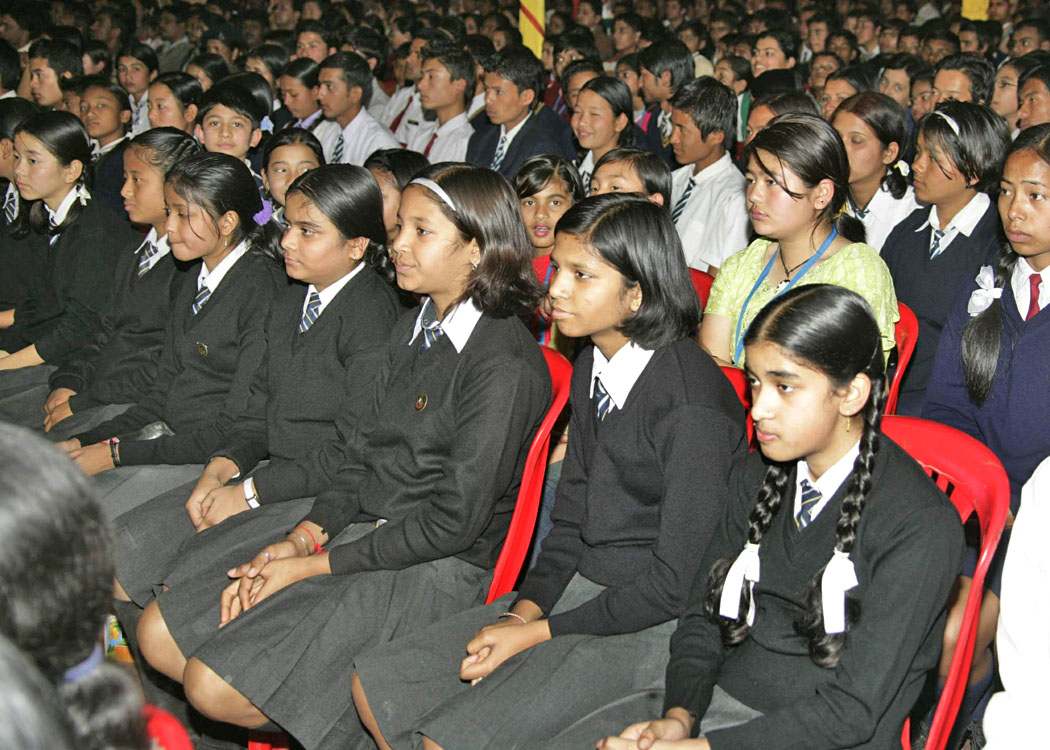
With these words, I inaugurate the 14th National Children?s Science Congress 2006 and my best wishes to all the participants from different States success in their mission of ?nurturing nature for our future through bio-diversity?. Let me also take this opportunity to wish you all a happy and prosperous New Year 2007.
May God bless you.
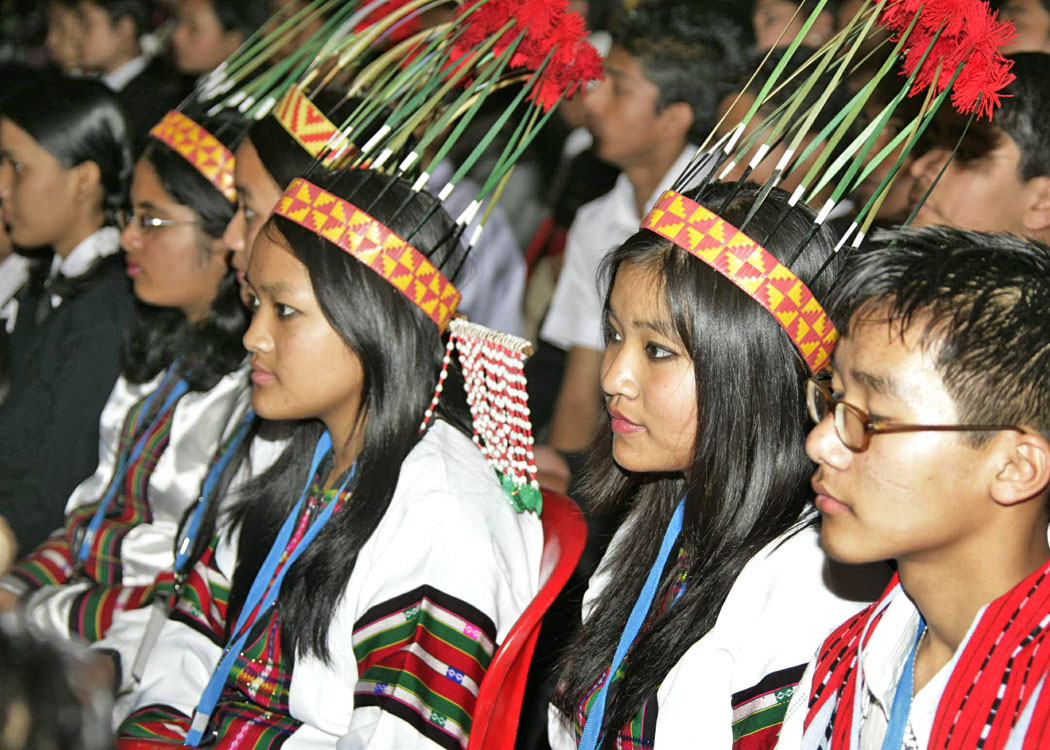

Question and Answer Session
1. Instead of spending so billions of rupees in Chandrayan is it not fair to spend on eradicating the hunger and poverty of millions of Indians?
- Abhishek, 11th Standard, Karnataka College
Ans: There is no contradiction. The Indian Space Programme has served the societal needs in several ways in education, communication, meteorology, resource survey, tele-medicine etc. Even as we do application of science and technology, there is also a need to get into basic research and research and development in advanced areas. The Moon exploration is important because it would give quite a lot of valuable information about earth origin and also we need to evaluate the availability of helium and other minerals which should be advantageous in the environment of depleting resources on the earth. With our launch vehicle and spacecraft technology, we are able to take up cost effective missions.
2. Most of the mega-hydel projects getting implemented are having serious implications on the rich bio-diversity of our eco-fragile state, with large tracts of land likely to be submerged. While in most cases it is purely a loss of habitats, in a few other cases it is livelihood of people, which are at stake. Beside, its brighter face being infrastructure development, revenue generation, creating opportunity for employment etc.
Sir, do you think that the mega-hidal projects that are getting implemented in our state are to be encouraged at the cost rich biodiversity of our eco-fragile state for development?
- eena Pradhan, Government Sr. Secondary School
Ans: Considering the whole of atmosphere which has to be preserved we have to go in for energy which can preserve the nature without carbon-di-oxide loading. India is blessed with Hydel power in many States. Hydropower is a clean power we have to use the Hydel power innovatively without damaging the environment. There are many techniques and methodologies available to do so. What is needed is the preservation of bio-diversity and also simultaneously deriving naturally available power from Hydel sources.
3. How can we educate masses for disaster management?
- Ibrana Naaz, 8th standard, Kainat International School
Ans: Disaster management training has to commence with the school curriculum. You might have read a news item in 2004-05, where a 10 year old British school girl saved the lives of hundreds of people during the Tsunamis episode in Thailand on 26th December 2004. She gave a warning to the people that a wall of water was about to strike, after learning about Tsunamis in her geography class taught by her teacher Mr. A. Kearney. Our teachers also must educate our children on various forms of natural disaster. In addition, the village knowledge center in each village has to be activated to educate the masses about disaster management systematically.
4. The Central Government has taken up a scheme to investigate Crude oil in the river bed of the Brahmaputra River, whereas the naturalists of Assam have opined that the bio-diversity of the region would be effected. What is your opinion in this regard?
- Sudeshna Saikia, 8th standard, Jyoti Bidyapeeth
Ans: As scientists, we have to get the best of both, that is cost effective energy without affecting bio-diversity. That is where the scientific innovation lies. One can note many successes world over in such efforts and in India as well.
5. Whether the global climatic changes is due to the increase in the speed in rotation of earth after Tsunami, or is it due to the green house gases?
- Md Aslam & A Manisha T. Kavitha, Government Secondary School
Ans: I have covered this aspect extensively in my talk and I am extremely glad that youngsters like you are taking interest in atmospheric sciences and earth sciences.
6. Sir, farmers in my area are making suicides. How can I help my farmers and my country?
- Jayashri Charpe, 10th standard, Bhawnjibhai Chawan High School
Ans: Farmers have six problems. That is (i) selection of right type of seeds for the matched soil (ii) seeding at the right time and (iii) purchase of seed at the most reliable source (iv) post seeding operations and care and (v) vagaries of the weather and (vi) right type of market which can give remunerative prices. You have to equip yourselves with the knowledge pertaining to the area and provide knowledge input to the farmers covering all the above six areas so that their productivity can be enhanced and remuneration goes up through right markets. There are models in the country where productivity has been doubled or tripled. At Gheri Buttar in Punjab, the seed cotton productivity has been doubled and in RP Channel area in Bihar Wheat and Rice production has been tripled. Thus, what the farmers need is knowledge input.
7. Lot of research is going on in Nano-technology in developed countries. What is its status in our country?
- K. Akhil, 9th standard, Government Higher Secondary School
Ans: Nano-science and technology research has started gaining momentum. We have examples like IISc, University of Delhi, Banaras Hindu University and DMSRDE (Kanpur) developing products like CNT based typhoid detection kit, cost effective drug delivery systems, nano-filters for water purification and quantity production of carbon nano-tubes for various applications. Further collaboration between academic institutions, national laboratories and industries is necessary to fully use the potential of nano-science and technology revolution for innovative products in various sectors like power, medicine and environment. There are already some good examples of industry picking up technologies from the academia for commercialization.
8. You have achieved success in life in many ways. Who is your role model towards your successful life or who is your inspiration?
- Nikita Vithal Naik, SMT Anandabai Maharandu Naik High School
Ans: My elementary school teacher Shri Sivasubramania Iyer, my college teacher in St. Joseph College, Trichy, Indian space visionary Vikram Sarabhai and Prof Satish Dhawan.
9. What according to you is the future prospect regarding technological advancement to exploit the rich bio-diversty of Manipur which will commercially benefit the state?
- L.Santosh, 12th Standard, Elite Senior Secondary School
Ans: I inaugurated the Passion Fruit Extraction Plant, Mau in Manipur. There is a large scope for bio-diversity activity in Manipur and other north-eastern States. Even Seabuckthorn and Jatropha which I have mentioned during my lecture can be grown in Manipur.
10. How shall I plan to be a responsible citizen of my country?
- Aswin Puri, 12th Standard, St. Michael Higher Secondary School
Ans: Fix an aim, acquire as much knowledge and skills as possible. Work hard. If you encounter problem, become master of the problem, defeat the problem and succeed. In addition, whatever I have given in the seven point oath follow it in your daily life.
11. There is increase in GDP and Sensex. Why then India still suffers illiteracy and hunger?
- Akash Kumar Panda, 9th Standard, Zilla School
Ans: The result of our growth has to reach the rural areas. We are looking for methods by which science and technology gets applied in our rural sector leading to prosperity of the whole nation. This penetration of prosperity to rural sector can be achieved through the ignited minds of the 540 million youth of the nation. This will remove the illiteracy and hunger from the nation.
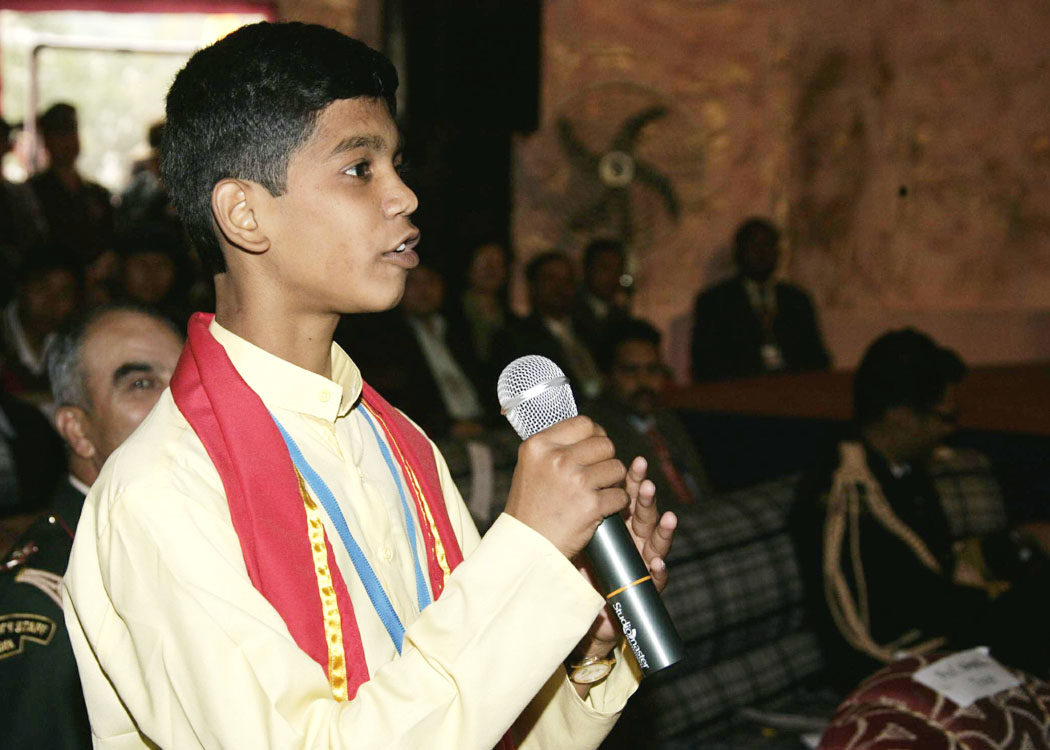
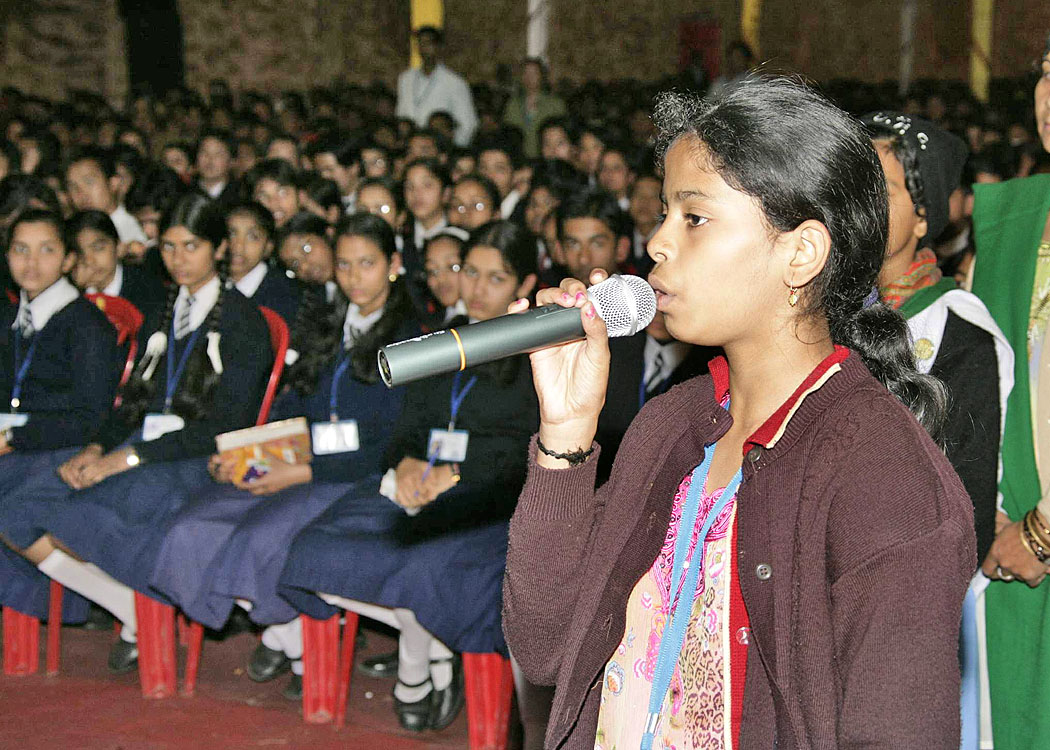
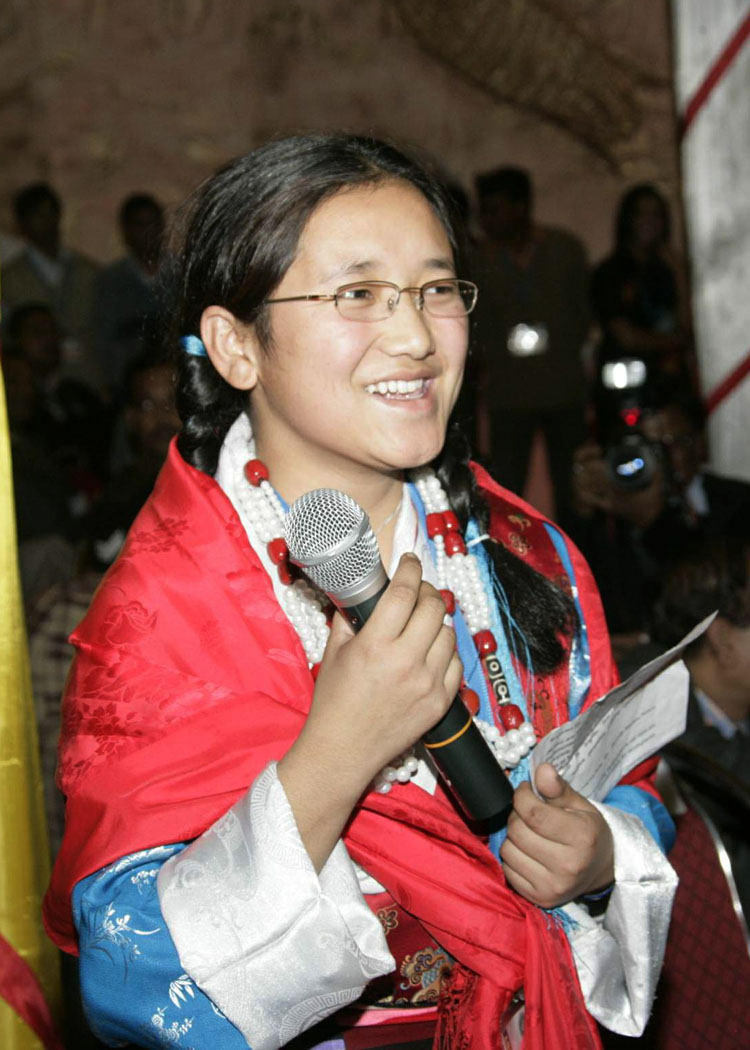
<<Back
|
|